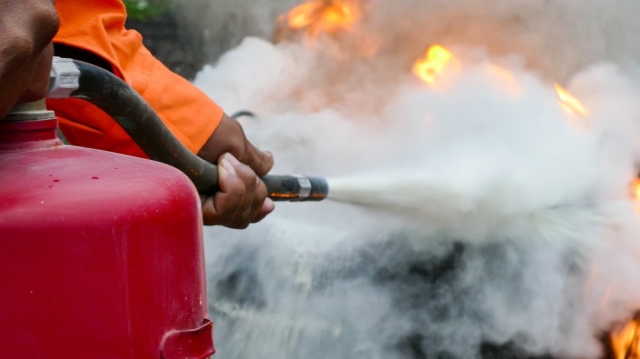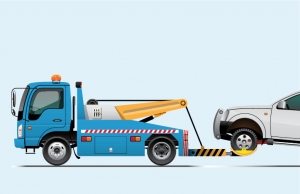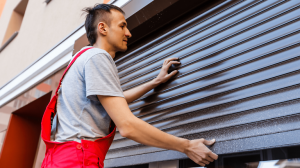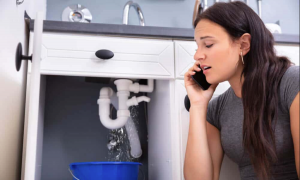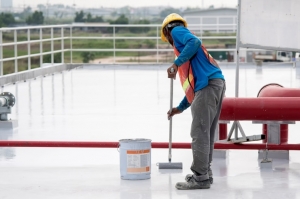Introduction
Fire safety is a critical aspect of homeownership that can mean the difference between life and death. It's not just about protecting property but also ensuring the safety of your loved ones. In this article, we'll dive into the top 10 fire safety tips every homeowner should know. These practical steps will help you safeguard your home against fire hazards and be prepared in case of an emergency.
Tip 1: Install Smoke Alarms
Smoke alarms are your first line of defense in the event of a fire. They provide early warning, allowing you and your family to evacuate safely.
Importance of Smoke Alarms
Smoke alarms can detect smoke well before you can, giving you the precious time needed to escape.
Placement of Smoke Alarms
Install smoke alarms on every level of your home, inside bedrooms, and outside sleeping areas. For best coverage, place them in the hallways and common areas.
Regular Testing and Maintenance
Test your smoke alarms monthly and replace the batteries at least once a year. If your alarms are more than 10 years old, it's time to replace them entirely.
Tip 2: Create an Escape Plan
Having an escape plan is essential to ensure everyone knows how to get out quickly and safely during a fire.
Importance of an Escape Plan
A well-thought-out plan can save lives by reducing confusion and panic during an emergency.
Steps to Create an Effective Plan
Identify two exits from every room, establish a meeting place outside, and ensure everyone knows how to call 911.
Regular Drills and Updates
Practice your escape plan twice a year and update it as necessary, especially if there are changes in your household.
Tip 3: Use Fire Extinguishers Properly
Fire extinguishers can control small fires and prevent them from spreading, but only if you know how to use them.
Types of Fire Extinguishers
There are different types for different fires (A, B, C, D, and K). Ensure you have the correct type for your needs.
Proper Usage Techniques
Remember the acronym PASS: Pull the pin, Aim at the base, Squeeze the handle, and Sweep from side to side.
Regular Maintenance
Check the pressure gauge monthly and have extinguishers serviced annually by a professional.
Tip 4: Be Cautious with Electrical Appliances
Electrical fires are a common cause of home fires, but they are preventable with proper precautions.
Avoiding Overloaded Outlets
Don't overload electrical outlets or power strips. Spread out appliances and use dedicated circuits for high-power devices.
Proper Usage and Maintenance
Unplug appliances when not in use, and never use damaged cords or plugs.
Recognizing Warning Signs of Electrical Issues
Watch for signs like flickering lights, warm outlets, or burning smells, and address them immediately.
Tip 5: Practice Safe Cooking Habits
The kitchen is a leading area for home fires, but safe cooking practices can greatly reduce the risk.
Never Leave Cooking Unattended
Stay in the kitchen while cooking, especially when using high heat or oil.
Proper Handling of Cooking Oils
Keep a lid nearby to smother grease fires, and don't let oil get too hot.
Keeping a Fire Extinguisher in the Kitchen
Have a class K extinguisher within reach in your kitchen for cooking-related fires.
Tip 6: Keep Flammable Materials Secure
Flammable materials can turn a small fire into a large blaze if not handled properly.
Proper Storage of Flammable Materials
Store gasoline, propane, and other flammable materials in approved containers, away from living areas.
Safe Handling Practices
Follow manufacturer instructions and keep these materials away from open flames and heat sources.
Keeping Flammables Away from Heat Sources
Ensure flammable items are kept at least three feet from heating equipment.
Tip 7: Maintain Heating Equipment
Heating equipment, including space heaters and fireplaces, need regular maintenance to operate safely.
Regular Inspection and Maintenance
Have your heating equipment inspected by a professional annually.
Safe Operation of Space Heaters
Keep space heaters on a stable surface, away from flammable items, and never leave them unattended.
Keeping Combustibles Away from Heating Equipment
Maintain a three-foot clearance around heaters and fireplaces to prevent accidental ignition.
Tip 8: Install Fire-Resistant Features
Enhancing your home with fire-resistant features can help slow down a fire and provide more time to escape.
Fire-Resistant Building Materials
Use fire-resistant materials for roofing, siding, and decking.
Fire Doors and Windows
Install fire-rated doors and windows to help contain fires.
Fire-Resistant Landscaping
Create a defensible space around your home with fire-resistant plants and materials.
Tip 9: Educate Your Family
Everyone in your household should know how to prevent and respond to fires.
Teaching Children About Fire Safety
Educate children about the dangers of fire and what to do in an emergency.
Regular Family Discussions and Drills
Hold regular family meetings to discuss fire safety and practice your escape plan.
Encouraging Responsible Behavior
Model and encourage safe behaviors, such as not playing with matches and understanding fire hazards.
Tip 10: Stay Informed About Fire Safety
Staying informed about fire safety can help you keep up with best practices and regulations.
Keeping Up with Local Fire Codes
Ensure your home meets local fire codes and standards.
Participating in Community Fire Safety Programs
Join local fire safety programs and attend workshops or seminars.
Utilizing Online Resources and Tools
Take advantage of online resources, such as websites and apps, to stay updated on fire safety tips and news.
Conclusion
Fire safety is not something to take lightly. By implementing these ten fire safety tips, you can significantly reduce the risk of a fire in your home and be better prepared in case one occurs. Remember, it's about protecting your home and the lives of those you love. For more detailed guidance and professional fire safety services, consider reaching out to DM Safety Services LLC. Stay safe and stay prepared!
FAQs
How often should smoke alarms be tested?
Smoke alarms should be tested at least once a month to ensure they are functioning properly.
What should I include in my escape plan?
Your escape plan should include two exits from every room, a designated meeting place outside, and a plan for calling 911.
How do I choose the right fire extinguisher?
Choose a fire extinguisher based on the types of fires you might encounter. Class A is for ordinary combustibles, Class B is for flammable liquids, Class C is for electrical fires, Class D is for metals, and Class K is for cooking oils.
What are common electrical fire hazards?
Common hazards include overloaded outlets, damaged cords, improper use of extension cords, and outdated wiring.
How can I make my home more fire-resistant?
You can make your home more fire-resistant by using fire-resistant building materials, installing fire-rated doors and windows, and creating a defensible space with fire-resistant landscaping.
